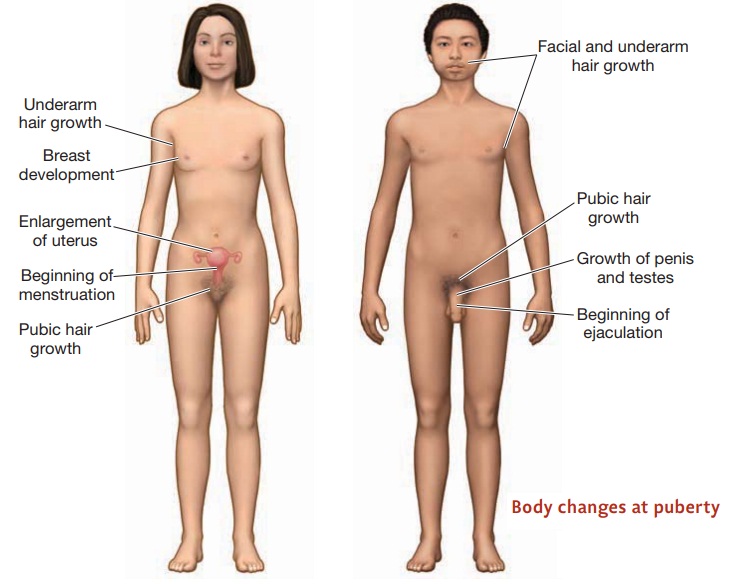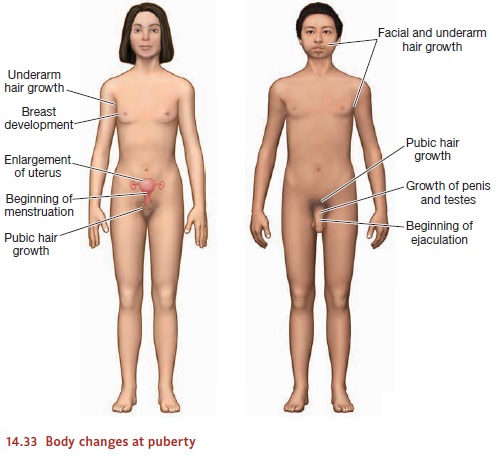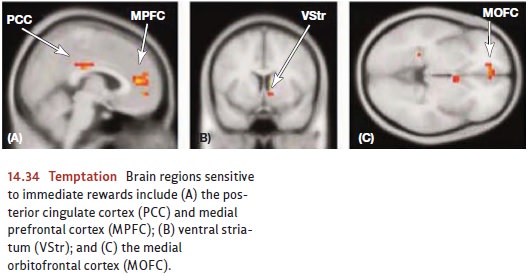Chapter: Psychology: Development
Physical Development in Adolescence

Physical Development in Adolescence
One
of the harbingers of adolescence is puberty,
a several-year period of physical and sex-ual maturation during which time the
body of a child morphs into its adult shape (Figure 14.33). In boys, puberty
usually begins at about age 12. It is accompanied by a growth spurt that
includes both primary sexual
characteristics (bodily structures directly related to reproduction, such
as penis, testes, and related internal organs) and secondary sexualcharacteristics (bodily structures that change with
sexual maturity but are not themselvesdirectly related to reproduction, such as
facial, pubic, and underarm hair, muscle growth in the upper torso, and a
deepening of the voice). One milestone in early puberty is a boy’s first
ejaculation, or spermarche, which
typically occurs by about age 14.

In
girls, puberty usually begins about age 10 and is accompanied by a growth spurt
that involves changes in both primary sexual characteristics (genitalia and
reproductive organs) and secondary sexual characteristics (growth of breasts
and hips, pubic and underarm hair). One milestone in early puberty for girls is
menarche, or the first men-strual
period, which usually occurs about age 12.
As with all developmental phases, there are substantial individual differences in the timing of the various steps in puberty—and these differences matter. For boys, early maturation is generally beneficial, because it means that they are bigger and stronger than peers who have not yet entered puberty. Early-maturing boys are (as we mentioned earlier) more likely to be popular and often more successful athletes and more confi-dent socially (Susman, Dorn, & Schiefelbein, 2003). It is also true, however, that early maturation can be associated with greater impulsivity, delinquency, and alcohol use (Steinberg & Morris, 2001).
In
contrast, girls who develop earlier than their peers may feel more stressed
than their peers, due to a mismatch between their physical and emotional levels
of development, as well as the attention their changing bodies attract from
older adolescents. Early-maturing girls are also more likely to have earlier
sexual experiences and unwanted pregnancies and are at elevated risk for a
number of psychological disorders (Archibald, Graber, & Brooks-Gunn, 2003).
For
both boys and girls, adolescence also includes important changes in the nervous
system. One aspect of this neurological development is the gradual myelination
of the frontal lobes—a portion of the brain essential for self-regulation.
Myelination is a slow process and is incomplete for most (and perhaps all) of
the time span of adolescence. This means that at a time when adolescents are
negotiating new demands and relationships, and feeling new levels of sexual and
aggressive drives, they do not have fully functional self-regulatory
capacities. This mismatch between newly strengthened drives and still immature
self-regulation is thought to underlie adolescents’ greater levels of
impulsiveness and risk taking (Figure 14.34; McClure, Laibson, Loewenstein,
& Cohen, 2004; Steinberg, 2007).

Related Topics